Many thanks to SWLing Post contributor, Dave Gahimer (K9ZCE) for the following guest post:
Small Magnetic Loop Antenna with Broadband Amplifier for SDR Reception
by Dave Gahimer (K9ZCE)
Those with limited space, or antenna restrictions, might find a small 1 meter loop antenna a solution.
My son lives in an apartment. One Loop leaning against a wall gives him acceptable reception with the SDRPlay RSP on the ground floor–2nd or 3rd level flats should have very good reception.
Ten meters off the ground outside should give reception equal to any SWL antenna. We all with SDRs fight the image problem. Normal resonate ham band antennas show too strong reception of unwanted bands/stations. Did I mention noise? Loops are well known for –6 db noise reduction.
Then there is the possibility of SDR chip damage from your 1.5 KW station! In researching Loops we came across LZ1AQ. A Brilliant design /engineer (http://www.lz1aq.signacor.com/). Deep reading sometimes, but a great understanding of what makes a good receiving loop antenna.
Those who chase DX know that sometimes fading is caused by the signals’ polarization changing in the Ionosphere. Having both vertical and horizontal loops, and the ability to combine both signals diminishes this fading problem. Being able to filter the powerful, commercial FM transmitters diminishes image problems. Clipping strong signals at the antenna from very near powerful antennas/transmitters could save the SDR receiver from damage.
The LZ1AQ broad band Amp solves all these problems. http://active-antenna.eu/amplifier-kit/.
My son Ted and I built three, one meter loops from soft ½ inch copper plumbing tubing. One for his apartment, two for my crossed loops antenna. We weather proofed the Copper from corrosion by coating with outdoor clear spar varnish. We shaped the circle by drawing the tubing around a round glass top patio table.
The soft copper loop in held by white PCV plastic plumbing pipe. 1” or 1.25 inch schedule 40. Be careful to check that the PVC is schedule 40, thick wall. The thin wall pipe is not strong in the wind and will crack when you try to drill it.
Drill up to a 3/8 hole for the ½” copper tube to go through, then file out to fit. Here are some photos (click to enlarge):
Check out these links (all courtesy of LZ1AQ) to acquaint yourself with the loop construction and amplifier installation:
http://active-antenna.eu/tech-docs/2_ActiveAA_Mount_20.pdf
http://active-antenna.eu/tech-docs/1_ActiveAA_DandS_20.pdf
http://active-antenna.eu/tech-docs/3_ActiveAA_Antena_11.pdf
Many SDR receiver owners have seen improved noise and Image reduction by placing the plastic cased SDR unit on a small shielded/ grounded case.
The Amp needs 12VDC from in the shack. The Amp has two relays that you can switch, from in the shack, to select Vertical or Horizontal loops, or a dipole. The loop amp connects back to the shack via a shielded Cat 5 cable, Make sure you get shielded CAT 5 to reduce noise pickup. Make sure you provide an adequate good Ground below the antenna, less noise pickup and lightening protection.
Have fun!
Dave, K9ZCE
Retired from EE Dept @ Rose-Hulman Institute of Technology
Terre Haute, Indiana
Thank you so much, Dave!
Readers: yesterday I saw Dave’s loop antenna photos on the SDRplay RSP Facebook page. I was fascinated by his horizontally/vertically oriented loops and asked if he would write up a short guest post. He kindly obliged in a matter of hours!
If you have an antenna project you’d like to share, please contact me. So many SWLs and ham radio operators live in areas with restrictions and pervasive RFI–projects like Dave’s can revive one’s radio life!

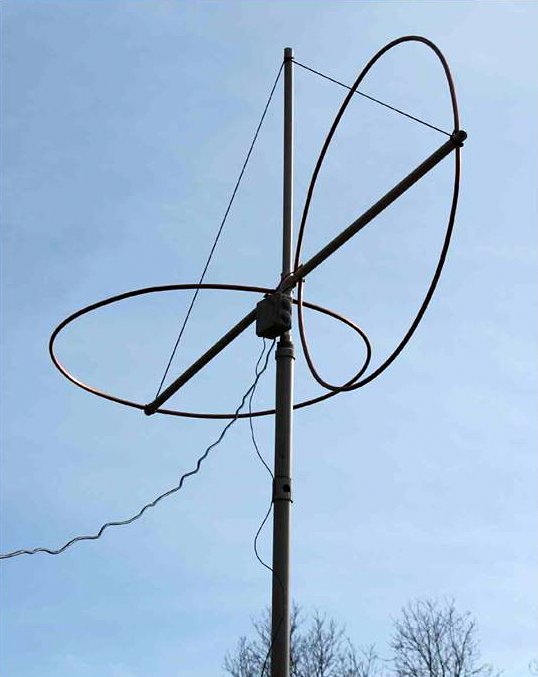
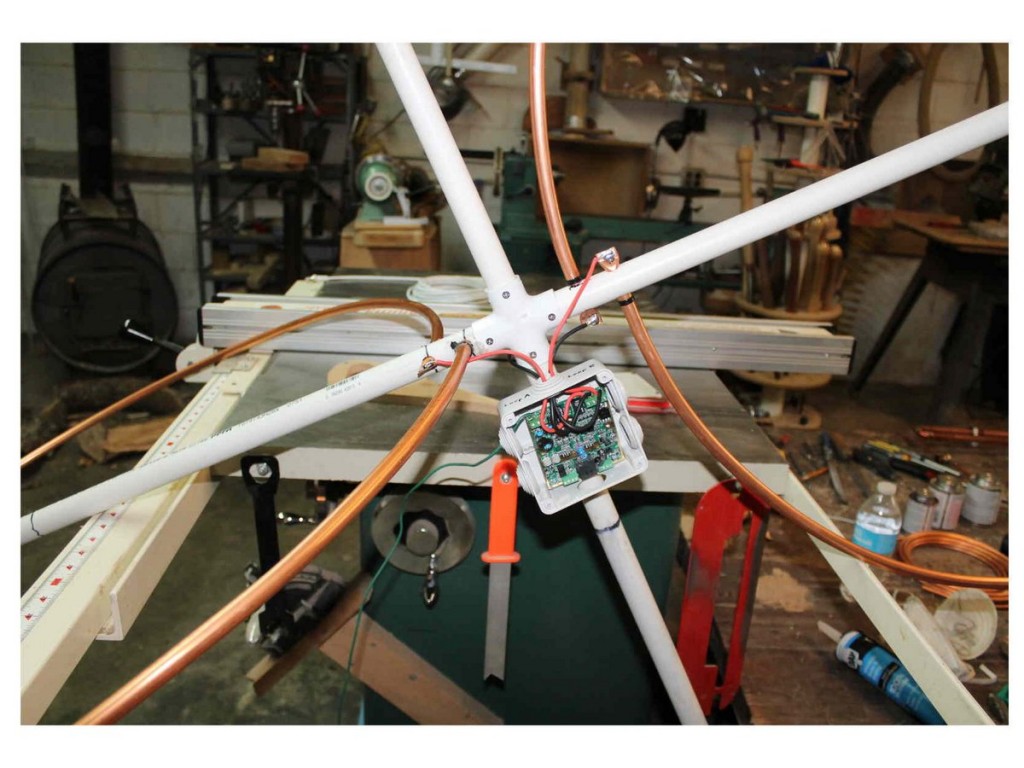
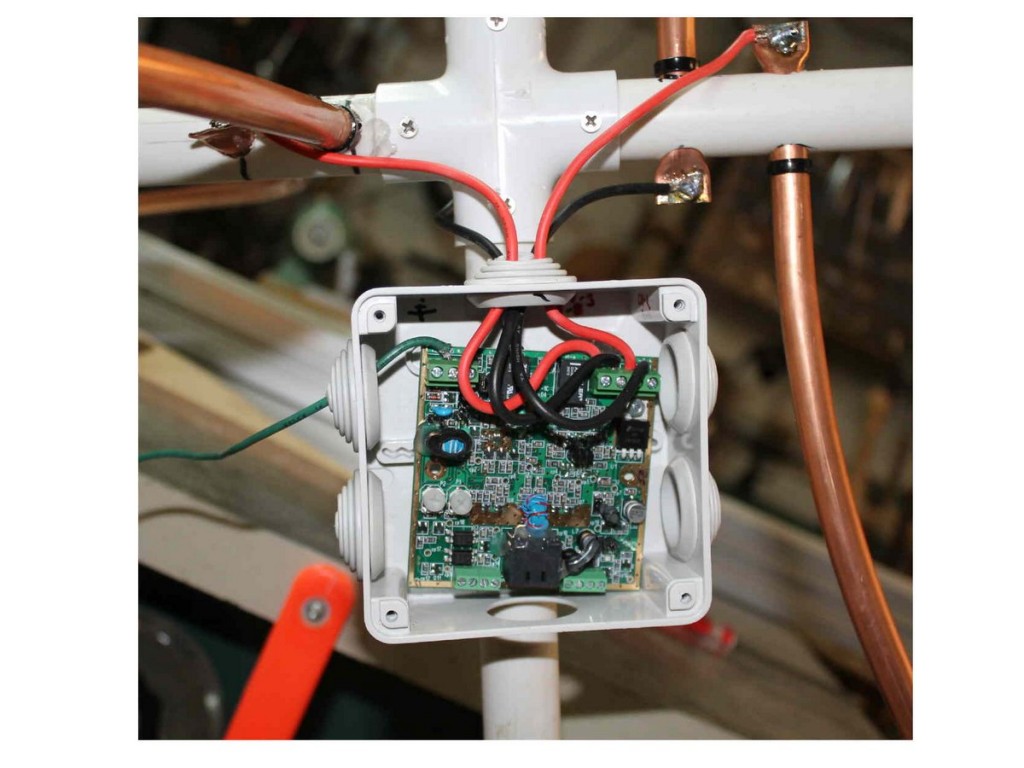
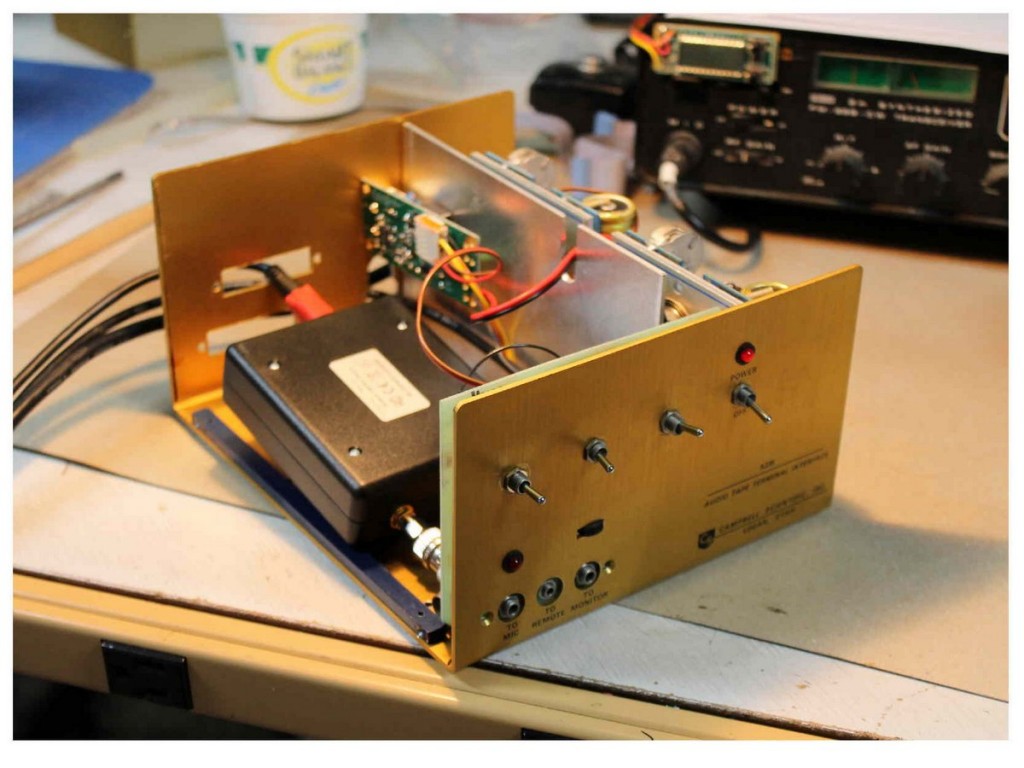
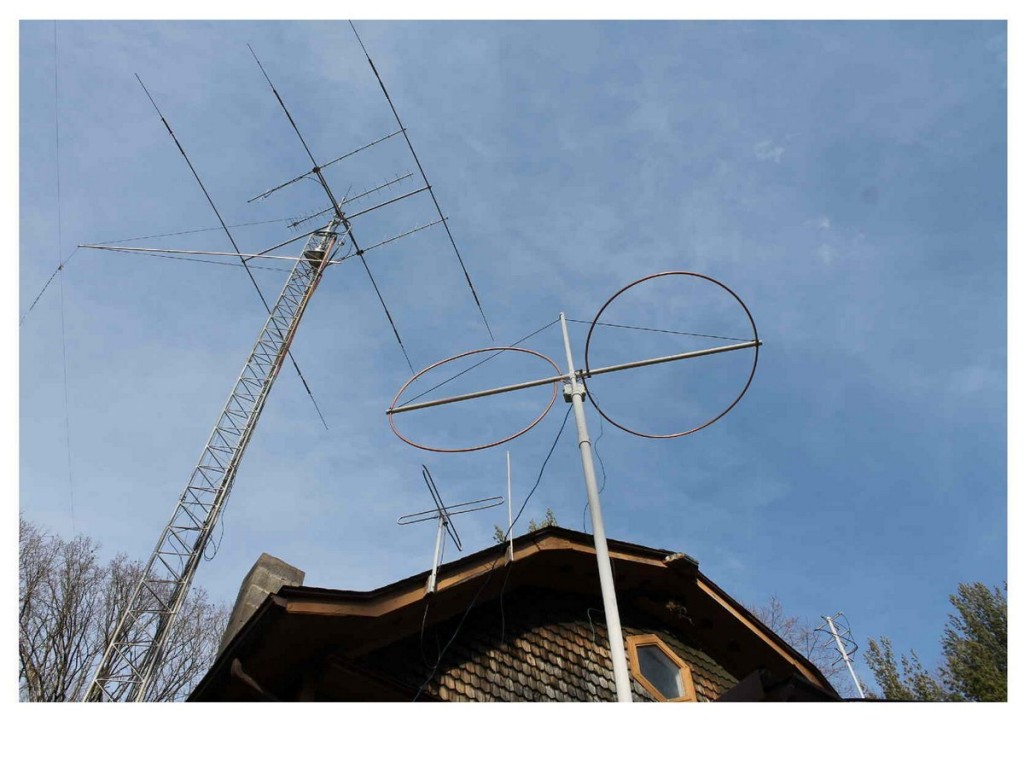
Question about the Support wire / rope at the very top that provides support strength to the horizontal BOOM. Is it a wire ( metal ) or rope ?? Thinking it “might” interfere with reception of the VERTICAL loop’s magnetic field reception if it is metal.
Garey Wittich. Alhambra, California
Just built mine. Works very well.
mike
Looks like an interesting and simple project. I’m curious if anyone has compared a loop using this amplifier with any of the commercially available receiving loops, such as the ones from Pixel or Wellbrook, as the cost in building one would be 1/4 to 1/5 the cost of one of those.
Are you using the antenna with an SDRPlay? Did you limit the voltage of the control board with jumper J8 “ON” or left it in default position of “OFF” ?
As a protective, weatherproofing coating spar varnish has a very limited service life.
The best quality marine spar varnishes contain UV inhibitors that extend the service life of the coating. Even so the very best marine spar varnishes should be recoated at least twice twice a year if left outdoors. If not, expect the varnish to fail quickly. It will dull, dry out and eventually flake off the object to which it was applied.
Spar varnish will adhere to copper. For the best adhesion I recommend sanding the copper surface well with 150 grit sandpaper first. Remove sanding residue with a tack cloth. Apply at least six coats of a quality marine spar varnish that contains the latest and greatest UV inhibitors, sanding the varnish surface with 120 grit sandpaper between coats. The UV inhibitors in spar varnish are effective only if multiple coats of varnish are applied.
Plan on sanding and recoating the varnish as soon as dulling of the surface gloss is observed.
There are other coatings available for outdoor use. I would suggest a quality exterior water based latex house paint for use on PVC pipe and copper. Paint should survive outdoors at least four times longer than spar varnish.
I wanted to buy one of those months ago, today I wanted to finally do it. But sadly, PayPal is the only payment option again, I once told PP (for a good reason) that they can shove my account up a place where the sun never shines and I don’t have or want a credit card and there’s no contact form or email address to contact LZ1AQ about possible alternatives on the page. No AAQ-1 for me. :/
There is an email address on LZ1AQ’s contact page.
I also use the LZ1AQ amp with my CloudIQ SDR. I use two loops, each about 30 inches diameter. The ability to switch various combinations of loops and dipole mode really adds to the effectiveness and noise control. Highly recommended, and a fun build.